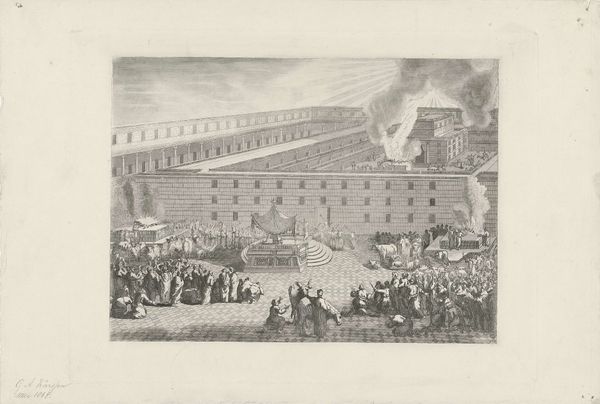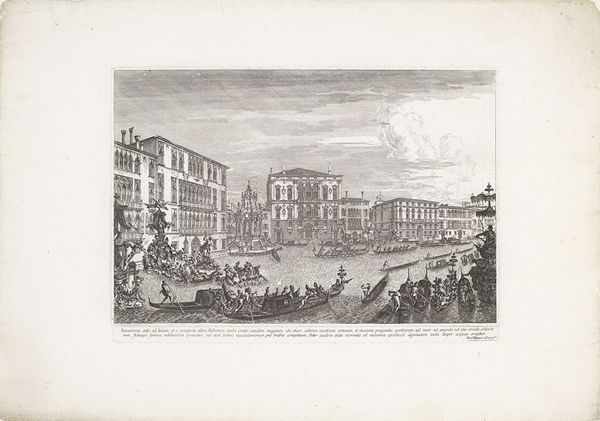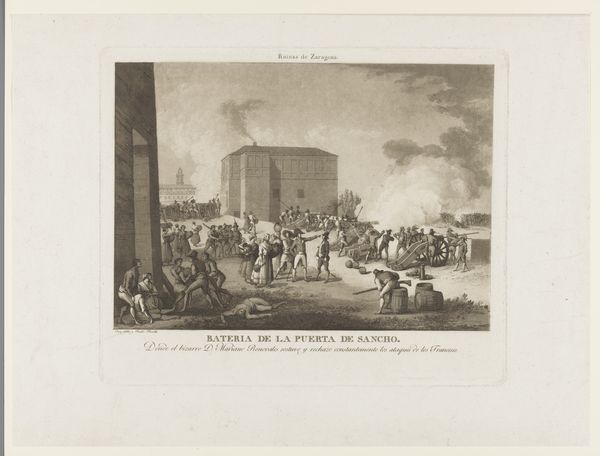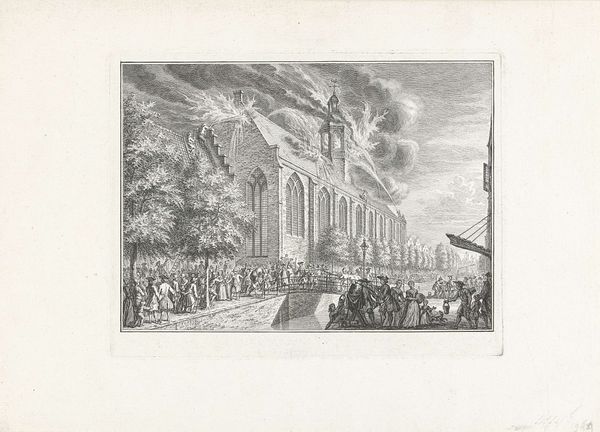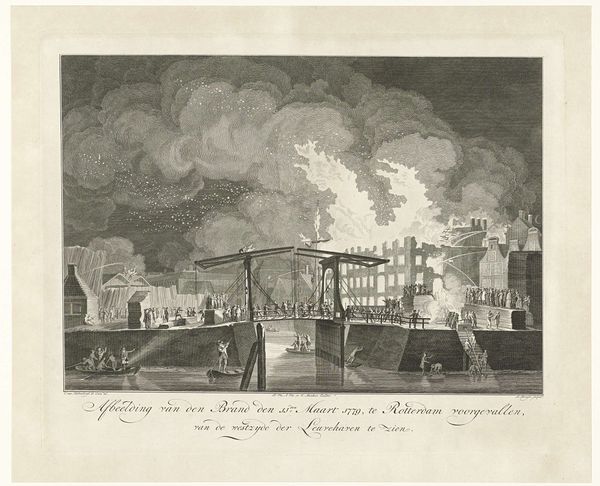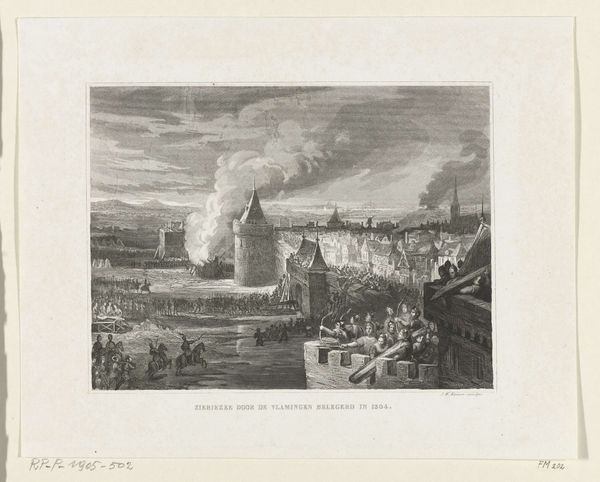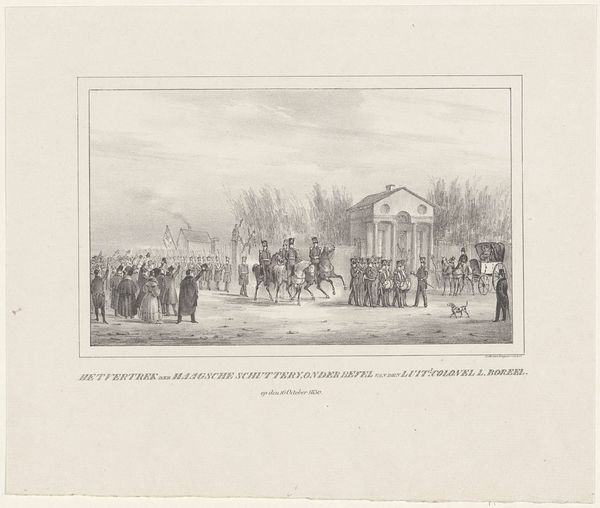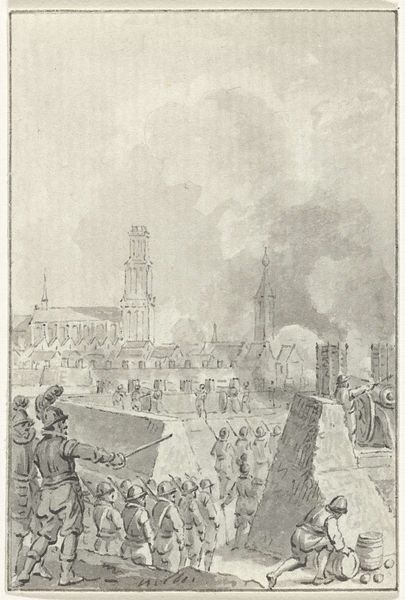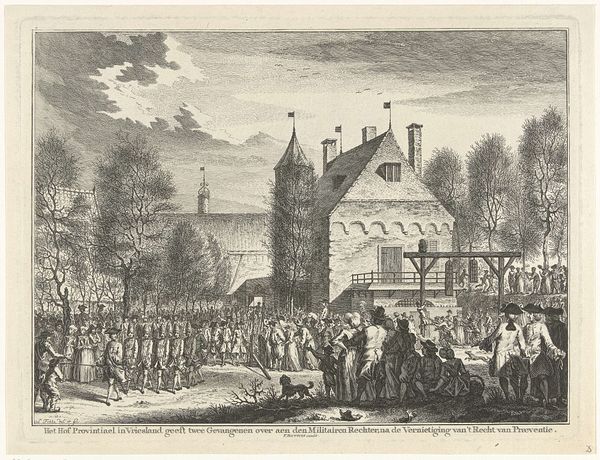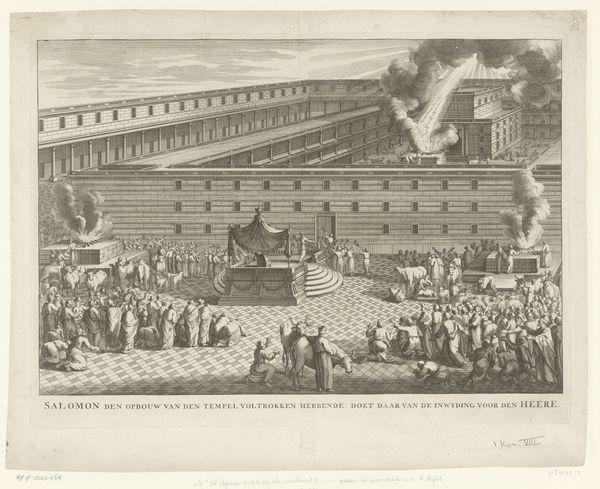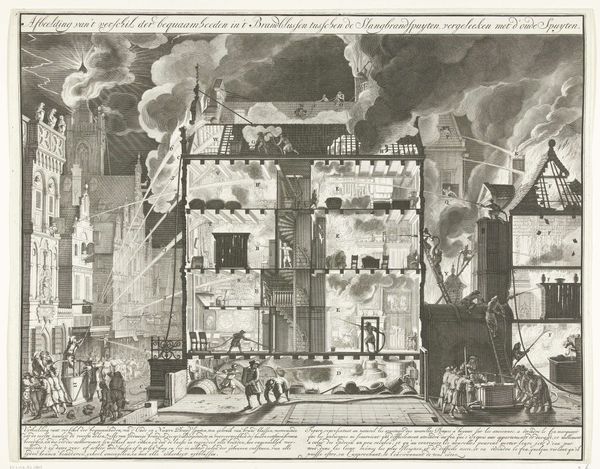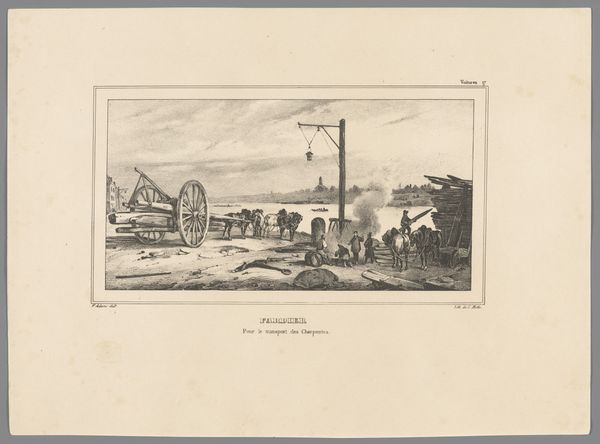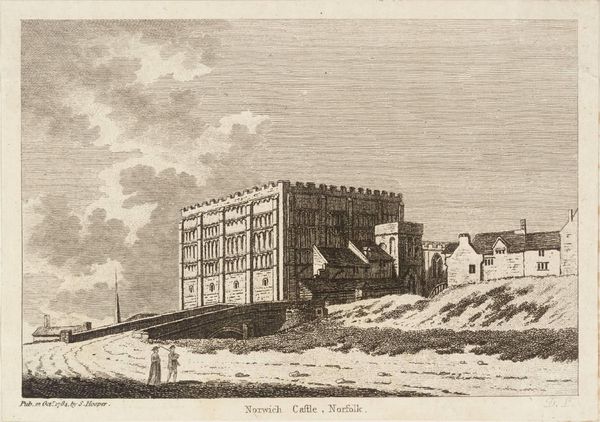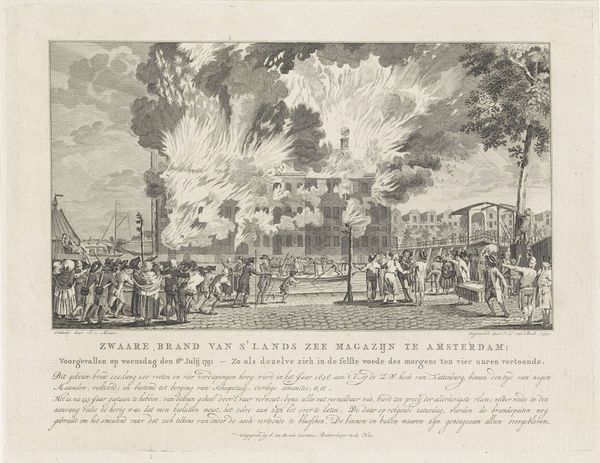
Bierbrouwerij en Azijnmakerij de Gekroonde Valk te Amsterdam, 1841 1841
0:00
0:00
print, engraving
# print
#
romanticism
#
cityscape
#
genre-painting
#
history-painting
#
engraving
#
realism
Dimensions: height 431 mm, width 567 mm
Copyright: Rijks Museum: Open Domain
Curator: Johan George Lodewijk Rieke, the artist, offers us this engraving from 1841 titled "Bierbrouwerij en Azijnmakerij de Gekroonde Valk te Amsterdam" – that translates to the Crowned Falcon Brewery and Vinegar Factory in Amsterdam. What impressions strike you initially? Editor: What a snapshot of industry! It feels quite romantic, doesn't it? Even with those billowing plumes of smoke – they’re more picturesque than polluting somehow. The whole scene seems bustling, yet orderly. Like a beautifully choreographed dance of labour. Curator: Indeed. This piece encapsulates elements of Romanticism and Realism. It attempts to document a specific locale with industrial progress yet also idealizes the harmonious relationship between people and industry. The factory’s name itself – Crowned Falcon – invokes a certain majesty despite its industrial function. Editor: The contrast is certainly striking, you're right. Those dark barrels, for instance – they're like stolid anchors tethering the entire airy composition to the mundane. Almost primordial. I mean, barrels of beer and vinegar—a powerful base for society in many ways, isn't it? Curator: Precisely! The artist subtly alludes to the socio-economic underpinnings of Amsterdam's growth during this era. Beer and vinegar production represent commerce, employment, and the very sustenance of the population. These barrels were a kind of symbolic lifeblood. Notice also how carefully the artist captures different social classes interacting around these symbols. Editor: Yes, it’s democratic, in a way. All levels mixing within the shared space of labour. That lone dog lazing in the foreground seems to observe them all impartially, and what a brilliant element to draw the eye! Perhaps representing how nature accepts all in its domain. Curator: Fascinating idea! Symbolically, the dog could represent loyalty, diligence, or perhaps even the ever-present instinct underlying even the most organized human endeavor. Editor: It's a comforting little reminder. To think, all this bustle has faded into quiet history… Still, that factory surely was quite the iconic point on Amsterdam's timeline. It must’ve looked futuristic in a time before rampant smog! Curator: Absolutely, reflecting Amsterdam's entrepreneurial and cultural vibrancy. Gazing at Rieke’s rendering, we understand this image as part social history, part psychological portrait—linking culture and the collective unconscious. Editor: Looking at it, I'm oddly thirsty. Art really can trigger the senses. Thanks for guiding us, with your rich observations, toward something much more compelling than mere factory output!
Comments
No comments
Be the first to comment and join the conversation on the ultimate creative platform.
